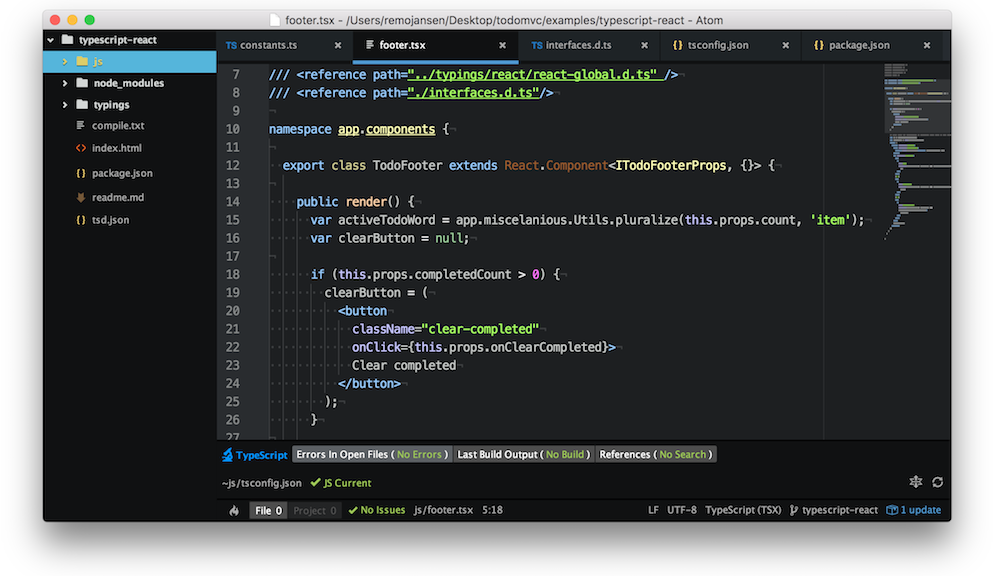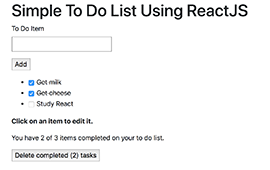

- #React todolist example how to#
- #React todolist example install#
- #React todolist example full#
- #React todolist example code#
I personally prefer redux toolkit over regular redux because it lessens the boiler plate code a lot.
#React todolist example full#
That’s it for the redux toolkit tutorial, you can find the full code here. Which is a function inside the Redux Toolkit package. To build the slice, you need to import createSlice. In it, You should define the initial state and the functions that will be needed to change the state when necessary. The slice is the component that keeps track of the app’s state.
#React todolist example install#
Installing Redux ToolkitĪfter cloning the repository above and installing packages, you should install redux toolkit and react-redux using the following command: npm install react-redux Our goal in this part of the article is to make the user able to add and remove to-dos from the list. Now that we have our UI ready, you’ll see that I’ve hard-coded the to-do list items. I won’t be focusing on the UI in this tutorial, so I made this github repository that you can clone that has the UI already created for you.

They eliminated a bunch of boilerplate code and made redux state management easier to create. In our todo list application example, we can pretent we’re given the following mock: Importantly, we can see our app has a TodoListItem, a TodoList, and an AddTodoForm. The creators of the package intended to make it the default way to write Redux logic. I personally prefer redux toolkit over regular redux because it is much easier to use.
#React todolist example how to#
In this tutorial, I’ll explain how to use the Redux toolkit by building a small to do list app that keeps its state using Redux Toolkit. semantic-ui which is a CSS framework for some ease in styling.Redux Toolkit is a react package for state management built on redux.Only a couple of additional packages are added to the project. I have used the latest version of create-react-app (CRA) i.e. Navigate to your folder and run the following command. For the full source code, feel free to follow the links - React Redux Todolist We will start this tutorial by creating a project with create-react-app. Here I will be discussing the overall architecture of the app and highlight the main parts. In the long term, the app’s implementation may change, but you want to make sure that the user experience doesn’t break.Īnother advantage is, react-testing-library comes out of the box with create-react-app, starting from version 3.3.0, so no additional effort spent in setting things up. The main philosophy behind this library is that it encourages you to test your app in a way that resembles the way your app is used, rather than testing the implementation itself. I felt it has a much simpler and intuitive API compared to Enzyme.Īccording to its author, Kent C Dodds, react-testing-library is A simpler replacement for enzyme that encourages good testing practices. RTL is quickly rising in popularity as an alternative to Enzyme. We will be diving deeper into component unit testing using the Jest framework and react-testing-library (RTL). The main goal of this guide is to learn unit testing react components by adding tests for our demo app. I also assume that you have basic familiarity with testing and jest in general. To follow along with this guide, you must have a basic understanding of how to build apps using React as we will not be discussing this aspect in detail. After that, we will unit test each of our components.

Firstly, we will go through the overall app architecture to understand the functionality and what each component in the app is responsible for.

I have prebuilt a simple Todo App using React. In this guide, we will take a look at unit testing our React App components.


 0 kommentar(er)
0 kommentar(er)
